Negative impact on the environment
Living organisms cannot distinguish garbage from food, ingesting garbage by mistake
Some living organisms cannot distinguish man-made garbage from food, leading to ingestion by mistake. Living organisms that mistakenly ingest garbage time after time may end up having garbage stored in the digestion system, such as the stomach, and develop difficulty in food intake. Some may even die as a result.
Examples of ingestion by mistake
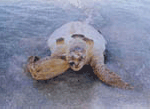
Sea turtle died after ingesting plastic bag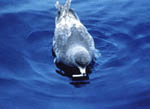
Bird pecking at garbage on the water surface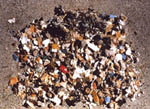
Small pieces of garbage retrieved from the stomach of a dead sea turtle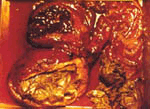
Plastic sheets stuck in the stomach of a dolphin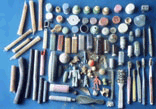
Garbage retrieved from the stomach of three dead albatross baby birds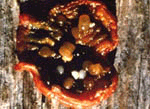
Plastics-making material (resin pellets) found stuck in the gizzard of birds
Living organisms unable to break free after being caught by fishnet or rope.
Some living organisms may approach garbage out of curiosity or try to eat the fish gathered around the garbage, ending up with parts of their body being caught by the garbage.
Most of the plastic garbage (chemical fibers) is quite strong and cannot be detached easily. The living organisms do not have hands like humans to remove the garbage.
Examples of damages from entanglement
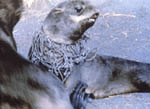
Baby northern fur seal entangled by fishnet on the neck
Sea turtle died from being entangled by fishnet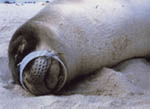
Seal died with plastic ring on the mouth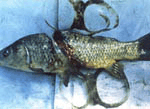
Fish caught in six-pack ring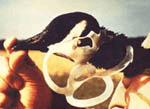
Goose found entangled with a six-pack ring on the neck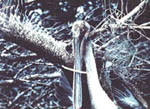
Pelican found dead entangled by fish line
Hinder the growth of seaside plants
Garbage piling up along the coastal areas may inhibit the photosynthesis and healthy growth of seaside plants.
Generating sludge at the bottom of the sea
When plastic sheets (plastic bags, shopping bags, etc.) sink to the bottom of the sea, the organic substances underneath the sheets become hard to disintegrate, turning into sludge as a result.
Ghost fishing
Fishing equipment and fishnets left in the sea become traps for living organisms. Since the living organisms cannot escape, they eventually die. Such casualties will keep repeating unless the garbage is removed or retrieved. This has also become an international problem.
